Radio towers are typically tall structures designed to support antennas for tele communications and broadcasting, including television. There are 2 main types: guyed and self-supporting structures.
They are among the tallest human-made structures. Masts are often named after the broadcasting organizations that originally built them or currently use them.
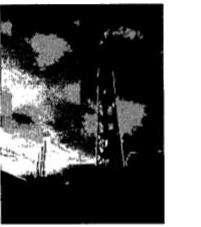
On a similar concept, a radio - station tower was built in two sections A and B. From a point 24 m from the base of the tower, the angle of elevation of the top of section A is 30∘ and the angle of elevation of the top of section B is 45∘).
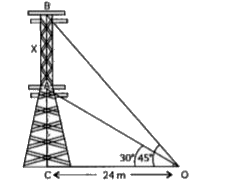
The height of the tower is
17.9m
24m
31.6m
20 m
The correct Answer is:B
Step by step video, text & image solution for Radio towers are typically tall structures designed to support antennas for tele communications and broadcasting, including television. There are 2 main types: guyed and self-supporting structures. They are among the tallest human-made structures. Masts are often named after the broadcasting organizations that originally built them or currently use them. On a similar concept, a radio - station tower was built in two sections A and B. From a point 24 m from the base of the tower, the angle of elevation of the top of section A is 30^(@) and the angle of elevation of the top of section B is 45^@). The height of the tower is by Maths experts to help you in doubts & scoring excellent marks in Class 10 exams.
Updated on:21/07/2023Topper's Solved these Questions
- SAMPLE PAPER 8Book:EDUCART PUBLICATIONChapter:SAMPLE PAPER 8Exercise:PART-B (SECTION-III)
Explore 9 Videos
- SAMPLE PAPER 8Book:EDUCART PUBLICATIONChapter:SAMPLE PAPER 8Exercise:PART-B (SECTION-IV)
Explore 9 Videos
- SAMPLE PAPER 8Book:EDUCART PUBLICATIONChapter:SAMPLE PAPER 8Exercise:PART-A (SECTION-I)
Explore 21 Videos
- SAMPLE PAPER 7Book:EDUCART PUBLICATIONChapter:SAMPLE PAPER 7Exercise:PART - B (SECTION - V)
Explore 8 Videos
- SAMPLE PAPER 9Book:EDUCART PUBLICATIONChapter:SAMPLE PAPER 9Exercise:SECTION C
Explore 10 Videos
Similar Questions
Radio towers are typically tall structures designed to support antennas for tele communications and broadcasting, including television. There are 2 main types: guyed and self-supporting structures.
They are among the tallest human-made structures. Mosts are often named after the broadcasting organizations that originally built them or currently use them.
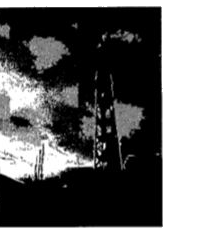
On a similar concept, a radio - station tower was built in two sections A and B. From a point 24 m from the base of the tower, the angle of elevation of the top of section A is 30∘ and the angle of elevation of the top of section B is 45∘).
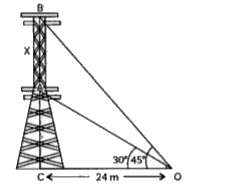
On the basis of the above information, answer any four of the following question:
The length of the wire structure from the point to the top of section A is
View SolutionFor television broadcasting, the frequency employed is normally
View Solution
Knowledge Check
Radio towers are typically tall structures designed to support antennas for tele communications and broadcasting, including television. There are 2 main types: guyed and self-supporting structures.
They are among the tallest human-made structures. Masts are often named after the broadcasting organizations that originally built them or currently use them.
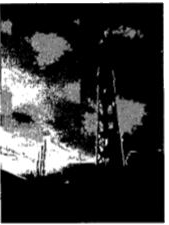
On a similar concept, a radio - station tower was built in two sections A and B. From a point 24 m from the base of the tower, the angle of elevation of the top of section A is 30∘ and the angle of elevation of the top of section B is 45∘).
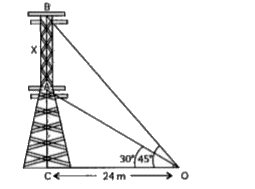
The height of the section A isA13.84mB14.6mC16.7mD34.6mRadio towers are typically tall structures designed to support antennas for tele communications and broadcasting, including television. There are 2 main types: guyed and self-supporting structures.
They are among the tallest human-made structures. Masts are often named after the broadcasting organizations that originally built them or currently use them.
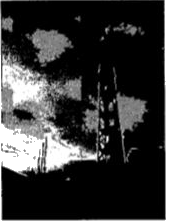
On a similar concept, a radio - station tower was built in two sections A and B. From a point 24 m from the base of the tower, the angle of elevation of the top of section A is 30∘ and the angle of elevation of the top of section B is 45∘).
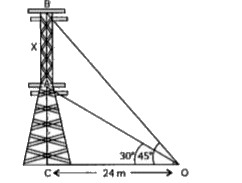
The height of the section B isA5.4mB3.3mC6.16mD10.16mRadio towers are typically tall structures designed to support antennas for tele communications and broadcasting, including television. There are 2 main types: guyed and self-supporting structures.
They are among the tallest human-made structures. Masts are often named after the broadcasting organizations that originally built them or currently use them.
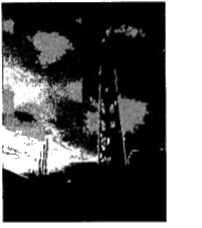
On a similar concept, a radio - station tower was built in two sections A and B. From a point 24 m from the base of the tower, the angle of elevation of the top of section A is 30∘ and the angle of elevation of the top of section B is 45∘).
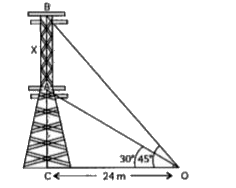
On the basis of the above information, answer any four of the following question:
The length of the wire structure from the point o to the top of section B isA11.8 mB14.6 mC27.7 mD33.84 m
For television broadcasting, the frequency employed is normally.
View SolutionSupportive skeletal structures in the human external ears and nose tip are of
View SolutionFor television broadcasting the frequency employed is normally
View SolutionFor television broadcasting , the frequency employed is normally
View SolutionThe supportive structure of our pinna is also found in
View Solution